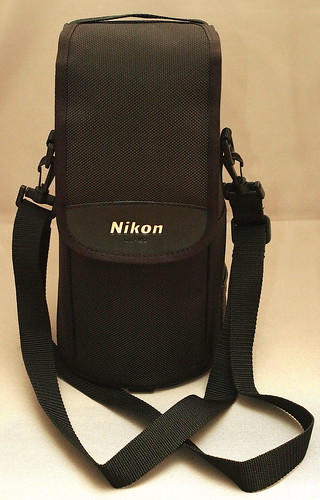
Impressions:
I bought this lens after having used a Sigma 70-200 2.8 and a Tokina 80-200 2.8.
I just wanted the
best performance there is on the market with the added value of
VR for low light shooting (typically portrait). For sports
shooting, you'll need high shutter speeds anyway. The first impressions
are the strong build and finishing. The lens is delivered with a lot of
accessories, including a pinch type cap, a huge and efficient sunhood
with a click mechanism based on a button, a nice and solid carrying
bag, and a nice tripod mount with a solid clicking mechanism.
The
lens has VR (vibration reduction technology) allowing to gain between 2
and 3 stops when shooting hand held. Two mode are available, VR normal
and VR active (typically used when you are in a moving vehicule or
doing panning). I always recommend to keep VR on, even when using
higher shutter speeds, this helps to compose the picture (you see what
you'll get in the viewfinder). On a tripod, I would always recommend to
switch it off.
The lens delivers crisp pictures even fully
open. AF is fast and does not hunt too much even in low light
situations.
The
VR is of the old generation. My experience so far is that you'll
win 2 stops but not much more. The VR on the 18-200VR lens for instance
is much more efficient. At 200mm I can shoot down to 1/10sec (1/20sec
to be safe) with the 18-200VR while the 70-200VR allows me to shoot at
1/50sec to be safe.
The AF has a manual override to correct the focus manually. It is also possible to lock the AF by pressing one of the three (!) buttons on the lens (close to the sunhood). This is a very useful function, onlyh found on long high end lenses. The AF also features a limiter switch to limit the hunting (full range or 2.5m to inifinity), making the AF even more efficient.
I will be able to give more info after some time, my experience with the lens is limited until now.
The bag you get to carry the lens:

This is how the lens looks like on a D200 body - you see how discrete this is...

There is now a kind of controversy on the net about this lens because of the specific performance on a D3 camera. Vignetting (dark corners) is an issue fully open (or up to f4). This can be compensated for in post processing and has been a general problem with many lenses during the film period. Another issue is a relative softness in the corners, difficult to solve even when closing down the lens. This is only valid for landscape photographers using the 70-200VR for that purpose. My main ussage of that lens (99.5%) is portaiture, wildlife and sports, and in that case the corner sharpness is totally irrelevant. Up to you to determine if this is a real issue or not.
For those who really have a problem with this, there are a few alternatives like the Sigma 70-200 2.8 or the Nikkor 80-200 2.8 AF-S but none of them has stabilization.
The reason for the overreaction about that lens can be found here on dpreview.
Pros
- very solid build
- constant 2.8 lens
- lens hood standard (petal type) - clicking mechanism with button to
unlock - reverse mounting for
transport
- very nice carrying bag
- excellent tripod mount in two pieces with clicking mechanism
- fast and quiet AF (AF-S)
- IF (internal focus)
- no moving external elements
- sharp even fully open (f2.8)
- reasonable MFD (minimal focus distance)
- no significant
vignetting, color aberration or distortion visible
- a lot of
controls switches available (AF/MF, VR, AF limiter, VR type -
normal/active, 3 AF lock buttons close to the sunhood)
Cons
- heavy (user dependent)
- price ? the most expensive lens in the category
- not very discrete when walking around
(certainly when mounted on a pro-body)
- vignetting fully open on a FF body
- soft corners on a FF body (D3)
One example - a first test shot at f2.8 200mm no sharpening applied (more to follow)

An example with the 2.0TC, the performance is still excellent - here on a D3 camera @400mm DX crop mode

The 70-200VR is also a wonderful lens for informal portraits

Also a nice indoor sports lens in combination with the right camera (here the D3)

Vignetting examples (@2.8):
90mm

